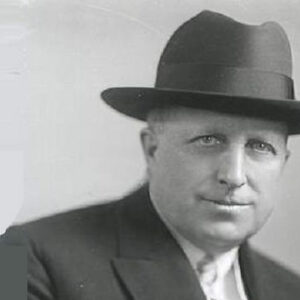William Randolph was a British colonist and landowner in the British colony of Virginia in the late 17th and early 18th centuries. He was born and raised in England and Ireland but moved to Virginia in his early years, persuaded by his uncle, to make a career. As soon as Randolph arrived in Virginia, he seized control of the colony’s most valuable market—slave trading and tobacco plantation. He began as an ‘undertaker’ and clerk at the Henrico county court, but quickly smuggled 72 servants and 69 slaves into Virginia, amassing land patents totaling 20,000 acres by the end of his life. He was also well-known for his extraordinary political career, which began with his representation of Henrico County in all House of Burgesses assemblies and culminated with his election as Speaker of the House of Burgesses, which ultimately resulted in his appointment as Clerk of the House. He married Mary Isham, who eventually became the heir to her father’s substantial wealth. They had nine children together, all of whom were notable for the properties they inherited.
Childhood & Adolescence
William Randolph was born in Warwickshire, England, on November 7, 1650, to Richard Randolph and Elizabeth Ryland. His father came from a little village east of Northampton and served Edward la Zouche and George Goring as a servant.
Apart from the fact that Randolph was the second of seven Randolph children, little is known about his youth. His family relocated to Dublin in the late 1650s, which means he spent his formative years in Ireland.
William Randolph’s Career
Randolph’s uncle, Henry Randolph, immigrated to Virginia and it is believed that during one of his trips back to Britain in 1669, he urged Randolph to join him in Chesapeake, Virginia.
He arrived in Virginia in 1672 and began his work as an ‘undertaker’ building buildings, but there is no strong evidence for this; everything is based on a collection of historical observations.
He was appointed clerk of Henrico County Court in 1673 and served for nearly ten years. He served as a justice of the peace, as well as sheriff and coroner.
By 1674, Randolph had amassed sufficient funds to trade 12 persons into Virginia, which won him his first land patent. Within the next two decades, he is known to have imported 72 servants and 69 slaves.
Nathaniel Bacon, a Virginia colonist who revolted against the government in 1676, had his land taken as a result. This location was called Curles, and it was located near Turkey Island. Governor Berkeley authorized Randolph to appraise and purchase the property.
Randolph represented Henrico County in the House of Burgesses from 1684 to 1698 and was immediately elected Speaker of the House and the Clerk of the House.
By the early 1700s, Randolph had reached the pinnacle of his political career; he had become a merchant and co-owned numerous ships that brought tobacco to England. He acquired 10,000 acres at Richmond and 3,256 acres at Westham as land gifts.
His Major Works
Randolph was a slave owner and possessed an estimated 20,000 acres of land patents, for which he paid property taxes on 1,655 acres in Surry County and 19,465 acres in Henrico County.
Personal History and Legacies
He married Mary Isham in 1675, whose father Henry Isham came from a prosperous family in Northamptonshire, and married a wealthy widow in Virginia. Three years later, Mary’s brother died, leaving her the heiress to her father’s substantial inheritance.
Estimated Net worth
William Randolph Hearst was an American newspaper publisher who died with a net worth of $30 billion.
Trivia
He was a friend of William Byrd’s and served as a political advisor to his sons throughout their political careers.
‘Bird’s Cage’ was the name of his home on the Turkey Island plantation’s high ground. It had a view of both the island and the river.
When Randolph succumbed to illness in 1702, his son William Randolph succeeded him as Clerk of the House of Burgesses.
During the 18th century, the Randolphs and their immediate relatives formed the dominant political bloc in the colonial government.
At least nine of his offspring are thought to have survived to adulthood, but the precise number of children born is unknown. William Randolph II of Wilton, Thomas Randolph of Tuckahoe, Isham Randolph of Dungeness, Richard Randolph of Curles Neck, Henry Randolph, Sir John Randolph of Tazewell Hall, Edward Randolph of Bremo, Mary Randolph, and Elizabeth Randolph were among those mentioned.
The estates left to each of his children set them apart.


